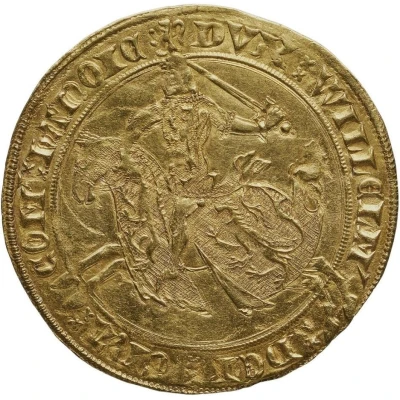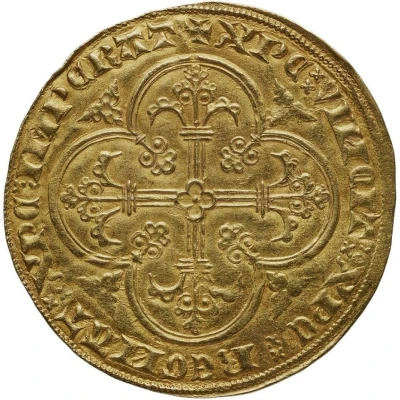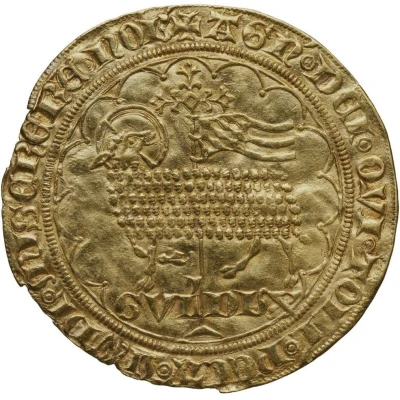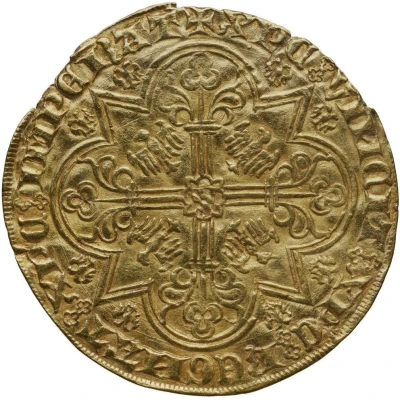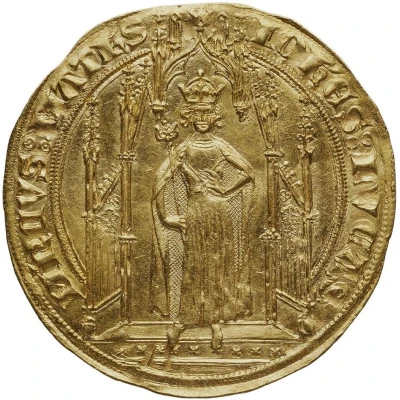
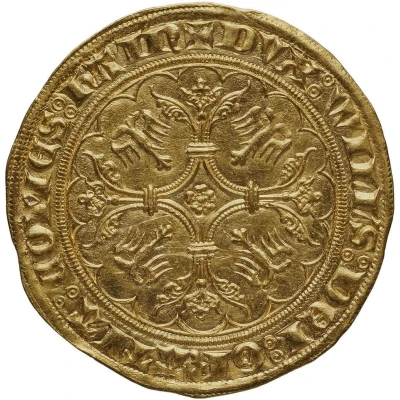

© Bibliothèque nationale de France / Gallica
Double Franc "à Pied" - William III of Bavaria ND
| Gold | 7.43 g | - |
| Issuer | County of Hainaut (French States) |
|---|---|
| Count | William III "the foolish" of Bavaria (1356-1389) |
| Type | Standard circulation coin |
| Years | 1365-1389 |
| Value | 2 Francs on foot (80) |
| Currency | Gros (1071-1506) |
| Composition | Gold |
| Weight | 7.43 g |
| Shape | Round (irregular) |
| Technique | Hammered |
| Demonetized | Yes |
| Updated | 2024-10-04 |
| Numista | N#368175 |
|---|---|
| Rarity index | 100% |
Reverse
Floriate triple cross with double-headed eagles in angles.
Script: Latin (uncial)
Lettering: DVX ⵓ WILL'S ⵓ DEI ⵓ GRATIA ⵓ COMES ⵓ hAIN'
Lettering (regular font): DVX ⵓ WILL'S ⵓ DEI ⵓ GRATIA ⵓ COMES ⵓ HAIN'
Unabridged legend: Dux Willelmus Dei Gratia Comes Hanonie
Translation: Duke WIlliam (of Bavaria) by God's grace Count of Hainaut
Comment
Also known as a "double royal d'or." Delmonte rates this type R4, only 2 or 3 known examples.Interesting fact
One interesting fact about the Double Franc "à Pied" coin is that it was minted during a time of great turmoil in Europe, particularly in the Holy Roman Empire, where William III of Bavaria was the Emperor. The coin's issuance was likely a response to the economic and political instability of the time, as the Empire was facing challenges from the Black Death, the Hundred Years' War, and internal power struggles. Despite these challenges, the coin's gold content and intricate design demonstrate the advanced craftsmanship and economic sophistication of the time.
